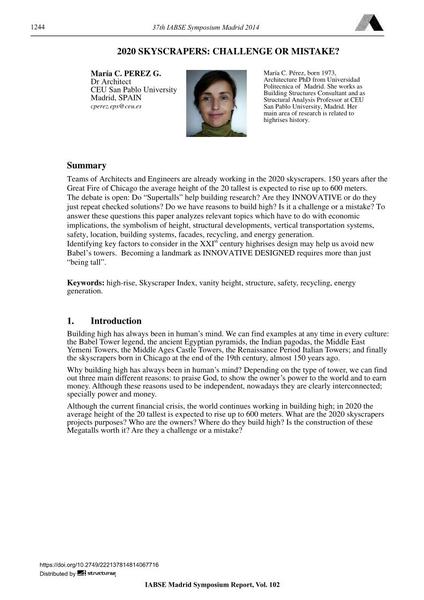2020 Skyscrapers: Challenge or Mistake?

|
|
|||||||||||
Bibliographic Details
| Author(s): |
Maria Concepcion Perez Gutierrez
|
||||
|---|---|---|---|---|---|
| Medium: | conference paper | ||||
| Language(s): | English | ||||
| Conference: | IABSE Symposium: Engineering for Progress, Nature and People, Madrid, Spain, 3-5 September 2014 | ||||
| Published in: | IABSE Symposium Madrid 2014 | ||||
|
|||||
| Page(s): | 1244-1251 | ||||
| Total no. of pages: | 8 | ||||
| Year: | 2014 | ||||
| DOI: | 10.2749/222137814814067716 | ||||
| Abstract: |
Teams of Architects and Engineers are already working in the 2020 skyscrapers. 150 years after the Great Fire of Chicago the average height of the 20 tallest is expected to rise up to 600 meters. The debate is open: Do “Supertalls” help building research? Are they INNOVATIVE or do they just repeat checked solutions? Do we have reasons to build high? Is it a challenge or a mistake? To answer these questions this paper analyzes relevant topics which have to do with economic implications, the symbolism of height, structural developments, vertical transportation systems, safety, location, building systems, facades, recycling, and energy generation. Identifying key factors to consider in the XXIst century highrises design may help us avoid new Babel’s towers. Becoming a landmark as INNOVATIVE DESIGNED requires more than just “being tall”. |
||||
| Keywords: |
structure safety recycling energy generation High-rise Skyscraper Index vanity height
|
||||
